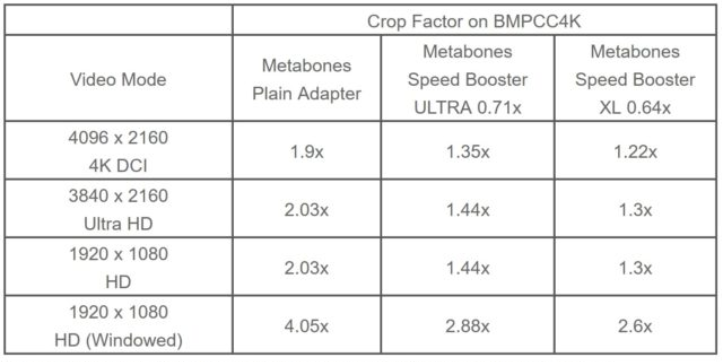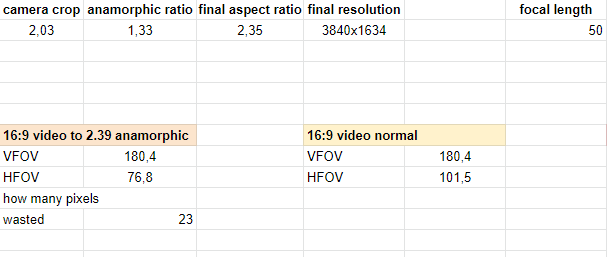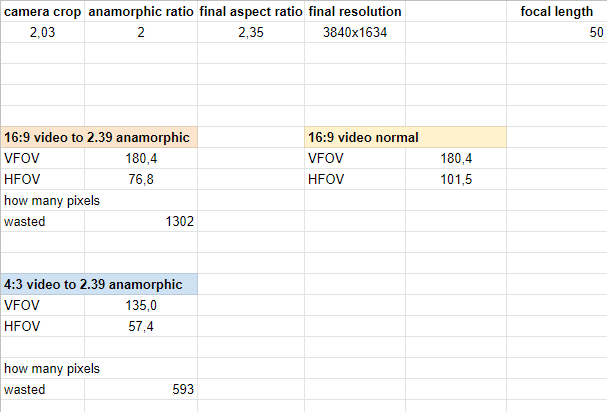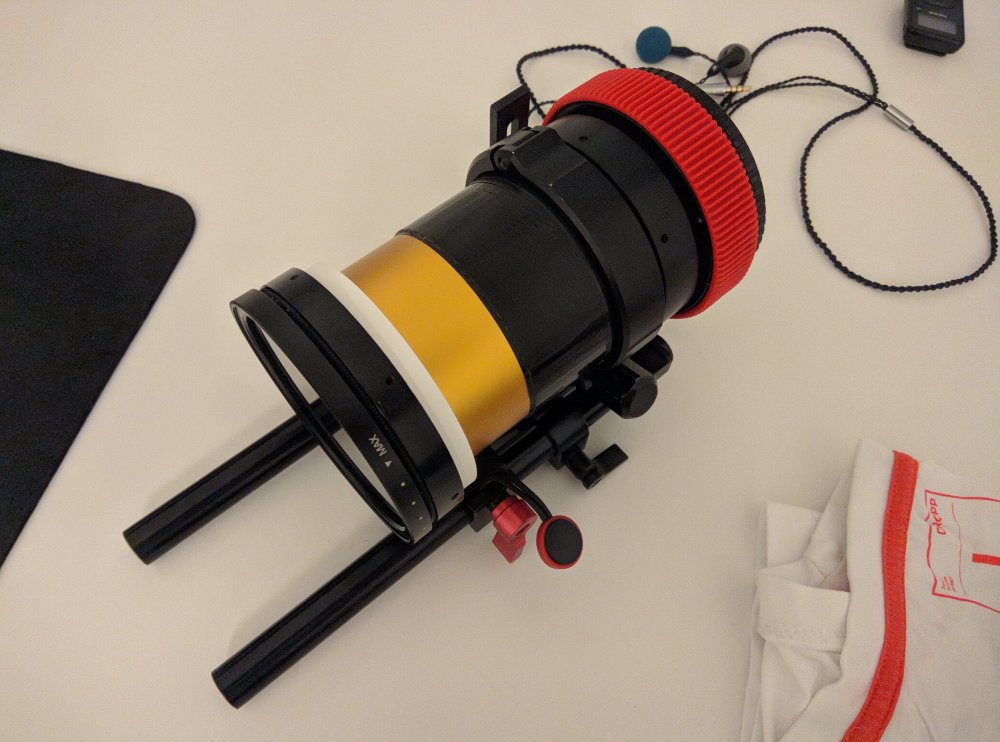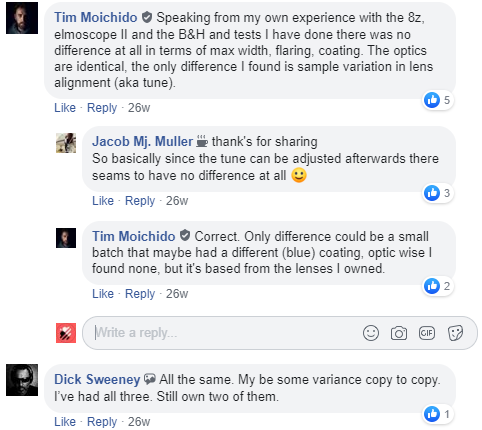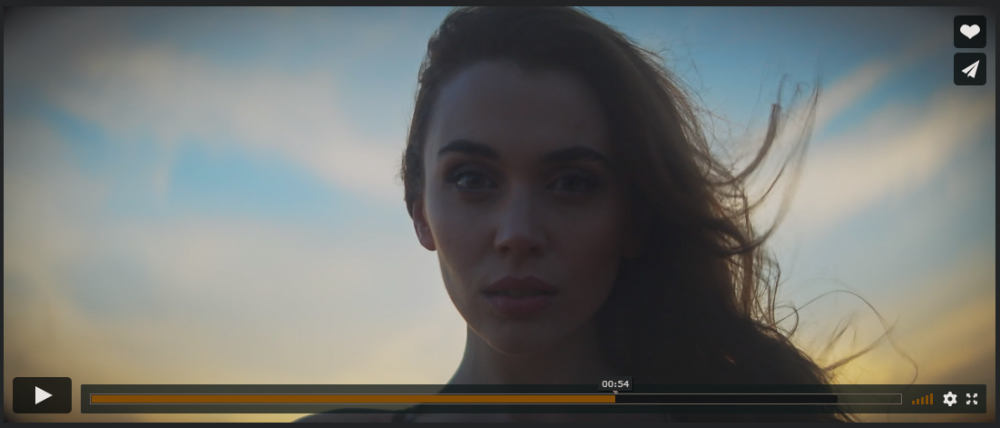-
Posts
814 -
Joined
-
Last visited
Content Type
Profiles
Forums
Articles
Everything posted by heart0less
-
This is what I've found on cinema5d. Based on this, here are my calculations: And if one used a 2x adapter: (by 4:3 video I mean GH5's ability to record 4:3 open gate [using whole sensor height]) My numbers may be wrong!
-
Like those ARRI Master Anamorphics you keep mentioning? ?
-
That's why people came up with all those DIY anamorphic adapters. Not only you feel some sense of a personal achievement when you finally get it working and looking good, it also saves you a lot of money.
-
I think I know which version you mean, but to be 100% sure I'd need some pictures of it. Nevertheless, Cineluxes that feature focus ring are humongous. They weigh over 4 pounds. Not sure if that's what you're looking for. ( : Cinelux is slightly bigger than Blue Star / Ultra Star. Like a 0.7 cm wider, 1.5 cm longer and 80g heavier. It's got bigger glass elements, though. It's not that bad! I'll send some photos of the rig later. I know the feeling. Regarding Pentax - the 50/1.7 M is my current favorite, it may be the best nifty-fifty I have ever owned. It's tiny, fun to use and provides a great looking image.
-
Correct! The one with hex / allen key adjustments is called Cinelux ES aka flat-top. I own a version with protruding screws / knobs. I got rid of them and then fixed focus at infinity. Talking about public places.. XDD Shiny gold and flashy red - oh yeah. Quite beefy, ain't it? It may be tiring, but believe me, it's better than jumping at the first opportunity hoping it'll somehow work out. You're welcome and thanks!
-
4K. Umm, you must've confused me with somebody else - I haven't had a single Kowa in my life. ( : Yup, it's kinda big - but I don't mind. Pooli rehousing makes it only 180 g lighter. Not that much of a difference - at least the additional weight helps me keeping the rig more stable. And even though both me and Pooli are practically neighbours, shipping the lens to him and getting it back would alone cost more than I actually paid for it. There is one thing about the rehousing you need to take into account, though. It makes the anamorphic adapter fixed focus - meaning you WILL HAVE TO buy a FVD for it, since you won't be able to double focus anymore. It would be a *perfect* anamorphic option, but: a) like I said, I'm a hobbyist - there is no need for me to own two camera bodies - two systems actually, b) GH5's price may have come down, but it's still more expensive than my X-T3 ?
-

Launch Announcement - PBC Pocket Remote For Blackmagic Pocket Cinema Cameras
heart0less replied to BTM_Pix's topic in Cameras
Well done, congratulations! (I hope I won't offend anyone with this hidden US flag.) -
You're welcome. It is a great combo - a little too tight for my liking (especially for indoors shooting), but if you put it on a 5D3, you'd get a bit wider FOV. (With ML you can go open gate [which means you can record in non-standard aspect ratios and use full height of your sensor], whereas I have to crop 6:5 out of 16:9 video, so I'm wasting a lot of sensor area.)
-
Congrats, X-T3 is a great choice! I know it's against all logic, but I heard that DR400 seems to be the best choice since it offers the best dynamic range. I think it may be some fancy way of naming vignetting correction. Just keep experimenting and see what you like best. Cheers!
-
Here you are: password: nik100e Attention: experimental vibes! The weather outside is horrible (though I shouldn't complain, it's December already) so I had to come up with something inside these four walls. All shot @ f/2.8 Fuji X-T3, Zhongyi Lens Turbo II, Nikkor Series E 100/2.8, Schneider Cinelux
-
IMHO, SLR Magic Rangefinder isn't worth it. I've had it for a while - just like you, I didn't feel like paying almost 600$ for FVD-16A. But man, it was one of my worst purchases ever. The scope I was using at the time was Ultra Star - it was as sharp and as contrasty as any of my taking lenses. Putting a Rangefinder in front completely changed that. It introduced some kind of glowiness to the image and reduced contrast a lot. Shadow areas also got some bluish cast to them. Bokeh wasn't oval anymore, it became smeary. What I'm getting at is: Rangefinder isn't neutral, it definitely introduces a look of its own. This video shows, what I have in mind. So I decided to let this one go. No regrets.
-
https://www.bbc.com/news/world-europe-50571010
-
Kowa 16-H , Kowa B&H, Elmo II and Kowa 8-Z are all the same lens - just a different branding. 16-H and 8-Z tend to cost just a tiny bit less than Elmo II, which is slightly cheaper than B&H. I'd say 250 $ - 300 $ for a copy in very good condition. Though it may take you some time to get a deal like this. Kowa B&H usually runs for about 900 - 1000 $ nowadays. Every year it becomes more and more expensive.. 16-H → 800 - 900 $. Remember that 16-D goes under many names: Sankor, Singer, Kowa, etc. I really recommend joining Anamorphic Shooters group on Facebook so that you can see all the marketplace posts.
-
And another one: https://docs.google.com/spreadsheets/d/13WruS37PBu9MH3RI-AsNClNsaLoS49IvRlLKx0uVuD4/edit#gid=0
-
Nah, I wouldn't say so. You're just cognizant. You could always try renting your setups to get some money back, if you don't mind other people fiddling with gear.
-
The smaller the front glass element in your taking lens, the better. Samyang 85 features 72 mm filter thread, so the glass itself could be ~ 60 mm, whereas most anamorphic adapters have ~ 40 mm rear elements. Most likely, the additional stop of light Samyang gives will be lost in the process, because you'll reduce the area through which light enters. Not to mention it may introduce vignetting. That's why people rarely use Sigma Art primes. In theory they would be a great choice, but their front elements are even bigger than Samyangs'.
-
At first it may look like 1.5x will give you much wider FOV, but it isn't the case. If you pair 85 mm with 2x scope, you'll get ~ 42 mm horizontal FOV. If you pair 58 mm with 1.5x scope, you'll get ~ 39 mm horizontal FOV. It's not that much of a difference. ? A word of warning: Getting a scope is just a beginning. You need a ton of accessories to make it work properly. At first I was so crazed about the idea that I completely forgot about rigging it up - and the next few months passed while I was still collecting necessary parts. So, the most basic setup consists of: - your camera and your taking lens, - anamorphic adapter, - some people use clamps to connect the anamorphic adapter to the taking lens (I don't), - something to secure your anamorphic adapter to rails (a standard telephoto lens collar is fine), - rails, - single focus diopter and external monitor are nice things to have, but they are not 100% necessary The reason I don't use a clamp is: they really slow you down if you want to swap your taking lens. I prefer having my adapter secured by the lens collar and just let it be. This way I can slide the camera in and out in a matter of seconds. Having a complete setup from Rapido is a bless and will definitely save you a lot of time, though I didn't mind picking every part myself. ( : Yup, it definitely would be. I also happen to own Nikkor 100/2.8 Series E, so if you need anything - let me know. Unfortunately, the closest I can go to mimic Full Frame is X-T3 (APS-C) coupled with 0.71x speedbooster. That's a great choice. Good luck!
-
Wow, this looks good! I'd say - yes, but the red flare caught me off guard. 16-D usually have blue flares - I guess the setting sun must've altered it. Also, some vignetting is already getting in the way: Here are some other 16D videos: UMP 4.6K , Takumar 55 mm, 16D, FVD-16A Setups described in the description: A very thorough test:
-
I'm glad I could clarify that for you. ( : That's right! If you want to have a wider FOV, then you'd have to buy proper anamorphic lenses like Atlas, etc. No adapter can go that wide. It's one of the reasons @Tito Ferradans came up with his 'Anamorfake It'. If your shot calls for a wide angle, then you could get away with a modded spherical lens. Like I said, you could take a look at Aivascope. https://www.facebook.com/aivascope/ It's a modern 1.5x lens. Quite pricey, but people who bought it seem to be really satisfied. Kowa C35 1.5x is just another unicorn that's hard to find. You'll be more likely to get an used Bollex Moller 16/32/1.5x (the one that @keessie65 owns). Here is a sample video recorded with 5D3 + ML RAW + Helios 44 + Bollex 16/32/1.5x + Rectilux HCDNA. Notice the crazy distortion on the sides and in the corners - it's a sign that going even a tiny bit wider could introduce severe vignetting. It mostly varies on a copy versus copy, but Red Ultra Stars tend to be newer, therefore they feature even better coatings which results in reduced flaring. I've got a 1st gen Gold Ultra Star and it's already really sharp and contrasty, even though it has some mild separation inside. What Julien said. It's quite difficult to answer, honestly. I'm happy with my middle class setup, since I'm just a hobbyist - that's why I don't need top tier gear. Every single post from Terrence Wilkins (a DP from UK) only confirms this belief. He uses setups based on Schneider Cinelux and FVD-16A. The law of diminishing results in anamorphics is even more cruel than in photography.
-
Good call! 5D3 coupled with ML still yields one of the best looking images, IMHO. 100% correct, these are the Holy Grails that everyone lusts for. These are a bit easier to get. I've seen a couple of them going for sale during the last year. However, they are more suited for smaller format cameras (eg. GH5) and shorter focal lengths. Definitely. If it comes to Kowas, the adapter you should be looking for is Kowa 16-H. It's sometimes called Kowa 8-Z or Elmoscope (Elmo) II. These are the finest anamorphic adapters and usually cost around 800 - 1000$ (adapter only). If you get a variable diopter (which you put in front of your anamorphic block), then every anamorphic adapter becomes single focus. Sorry, but this is not possible with 5D3. The widest you could go on a full frame camera would be ~ 80 mm if you plan on acquiring a 2x stretch factor anamorphic lens. You could (though I cannot guarantee that) get away with 50 mm if you bought a 1.5x anamorphic, like Aivascope II. This calls for either ISCO Ultra Star or Schneider Cinelux. I have both of them and, in my opinion, they are hugely underrated. They are as sharp as your taking lens and do not degrade contrast, at all. What's more, it's not that difficult to find one in a good condition and they usually run for ~350 $. Unfortunately, it doesn't go more compact than ~ 600 - 800 g and 10 - 15 cm. It's not that bad, but usually takes around 20 seconds to achieve perfect focus. The worst thing is: you cannot rack focus. From 550$ up to 1000$ if you want to have something you can rely on. There are two brands: Rapido (which offers FVD-16A) or Rectilux (and its Hardcore DNA aka HCDNA). I realize this may sound complicated at first, but if you keep on reading, you'll quickly get to know what's right. My interest in anamorphics started only a year ago, so it's not that difficult topic to grasp. ( : The most important thing here is patience. If you have any questions, feel free to ask them.


